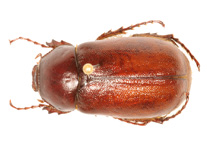Abstract
The continental shelf of Rio Grande do Sul (RS) is predominantly composed of unconsolidated sediments with a few hard substrates represented principally by beachrock. In this area there are elongate deposits of shell gravel material which are interpreted as indicators of the palaeo-shorelines. These Pleistocene deposits are overlapped by Holocene sediments (Recent), but are exposed during erosive events caused by extra-tropical cyclones, which provide the mixture of both sediments mainly during autumn and winter. The few studies on bryozoans made in this area previously recorded seven species, one fossil and the other six from Recent fluvial and marine environments. The aim of the present study was to describe the eight most abundant bryozoan species that occur in the inner RS shelf. Of these, four are new records for RS State (Arachnopusia aff. pusae, Hippomonavella brasiliensis, Turbicellepora pourtalesi, and Lifuella gorgonensis), and the other four are new to science (Chaperia taylori, Micropora nodimagna, Cellaria riograndensis, and Exochella moyani).

